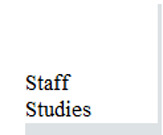
Staff Studies
 |
165
The Demand for Trade Credit: An Investigation of Motives for Trade Credit Use by Small Businesses Gregory E. Elliehausen and John D. Wolken September 1993 |
Summary: Trade credit--credit extended by a seller who does not require immediate payment for delivery of a product--is an important source of funds for business customers. In 1987, such credit accounted for about 15 percent of the liabilities of nonfarm nonfinancial businesses in the United States, approximately the same percentage of liabilities as these firms' nonmortgage loans from banks. Trade credit apparently is especially important for small businesses: In the same year, it accounted for about 20 percent of small firms' liabilities.
Businesses that choose to finance their purchases through trade credit have several options for payment: They may pay the supplier promptly and in so doing receive a cash discount; wait until the bill's due date and consequently pay the interest cost implicit in forgoing the cash discount, at a rate frequently higher than the rate on credit from institutional lenders; or pay late, after the bill's due date, and thereby risk incurring additional costs in the form of explicit interest charges or penalties, or both. Although trade credit is an important source of funds for small businesses, little has been known about the reasons business customers use it.
Theoreticians have linked the use of trade credit to a transaction motive--a desire to realize economies in cash management--and to a financing motive--use of trade credit because credit from other sources, particularly from financial institutions, is limited. These theories are not mutually exclusive, yet no earlier study has integrated the two in a single theoretical or empirical model. Previous studies have focused on one or the other of the motives, and available empirical evidence on trade credit use, especially by small businesses, is limited.
This paper presents a model of trade credit demand that incorporates both the transaction and financing theories of trade credit use. The model relates characteristics of the firm to trade credit use associated with either the transaction or the financing motive. One important feature of the model is a link between trade credit use and credit rationing. This link permits an empirical test for the presence of rationing in markets for business credit.
The model of trade credit demand was used to analyze small businesses' decisions about using trade credit at all, about making late payments, and about the amount of trade credit to use. The data came from the National Survey of Small Business Finances, a one-time survey of a nationally representative sample of about 3,400 businesses having 500 or fewer employees that were operating at the end of December 1987. (The survey was conducted in 1988-89 for the Board of Governors of the Federal Reserve System and the U.S. Small Business Administration.)
The results suggest that both the transaction and financing motives explain small businesses' use of trade credit. Characteristics of firms associated with the transaction motive--notably, a relatively large volume of purchases and relatively great variability in the timing of delivery of the purchases--were significantly related to a greater probability of using trade credit and a greater dollar amount of trade credit outstanding. Similarly, firm characteristics associated with a financing motive--relatively higher business and financial risk, among others--were significantly related not only to a greater probability of using trade credit and a greater dollar amount of trade credit outstanding, but also to a greater probability that the firm made some percentage of its payments on trade credit after the due date. These results are consistent with the predictions of theoretical models of transaction and financing motives for trade credit use.
The results suggest that the financing motive does not stem from the substitutability of trade credit and institutional credit. Instead, firms having relatively large amounts of short-term institutional credit were also the largest users of trade credit. This finding is consistent with the hypothesis that small businesses are subject to credit rationing by financial institutions: Firms with already-high levels of debt from financial institutions, facing limitations on additional institutional credit, turn to trade credit as a source of additional credit despite the high implicit interest cost.
Also investigated using the model of trade credit demand was the relative importance of the transaction and financing motives. The size of the financing component of trade credit demand ranged from about two-fifths to one-half the estimated size of the transaction component. Clearly, each motive accounts for a sizable portion of total trade credit demand. Thus, both the transaction motive and the financing motive appear to be economically significant determinants of trade credit use.
Full paper (99 KB PDF)
Home | Economic research and data | Staff Studies
Accessibility
To comment on this site, please fill out our feedback form.
Last update: May 29, 2002